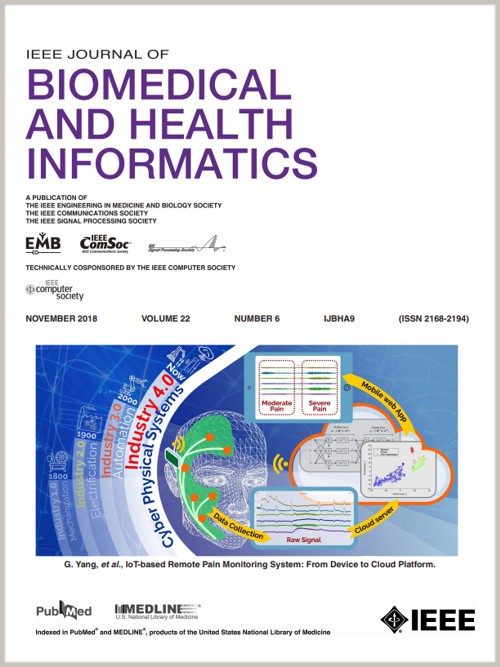Pseudo-HFOs Elimination in iEEG Recordings Using a Robust Residual-Based Dictionary Learning Framework
IF 6.7
2区 医学
Q1 COMPUTER SCIENCE, INFORMATION SYSTEMS
IEEE Journal of Biomedical and Health Informatics
Pub Date : 2024-12-12
DOI:10.1109/JBHI.2024.3516613
引用次数: 0
Abstract
High-frequency oscillations (HFOs) in intracranial EEG (iEEG) recordings are critical biomarkers for localizing the seizure onset zone (SOZ) in patients with focal refractory epilepsy. Despite their clinical significance, HFO analysis is often compromised by high-frequency artifacts that bypass conventional detectors, resulting in false-positive events that dilute the reliability of the HFO pool. To address this challenge, this study aimed to develop an automated method to accurately identify and eliminate false-positive events, ensuring more robust and artifact-free HFO analysis for clinical applications. Using iEEG data from 15 patients with focal epilepsy, we implemented an attention-based cascaded residual dictionary learning framework coupled with a random forest classifier. Events passing an initial amplitude detector underwent a second-stage refinement to remove artifacts and non-neural noise that mimicked HFOs. This was achieved by evaluating event reconstruction quality using a dictionary learned from genuine HFOs. Compared to visual assessments by three human experts, the proposed method demonstrated 92.14% classification accuracy in distinguishing real HFOs from pseudo-HFOs. Additionally, the method improved SOZ localization accuracy in noisy iEEG data by 20% (p=6e-5) and in clean iEEG data by 4% (p=3.3e-3). The learned dictionary effectively captured raw HFO morphology in shallow layers, while deeper layers identified ripple and fast ripple components, all without human supervision. These findings highlight the algorithm's effectiveness in detecting pseudo-HFOs in corrupted iEEG data, thereby enhancing the clinical utility of HFOs as biomarkers for SOZ in epilepsy.求助全文
约1分钟内获得全文
求助全文
来源期刊

IEEE Journal of Biomedical and Health Informatics
COMPUTER SCIENCE, INFORMATION SYSTEMS-COMPUTER SCIENCE, INTERDISCIPLINARY APPLICATIONS
CiteScore
13.60
自引率
6.50%
发文量
1151
期刊介绍:
IEEE Journal of Biomedical and Health Informatics publishes original papers presenting recent advances where information and communication technologies intersect with health, healthcare, life sciences, and biomedicine. Topics include acquisition, transmission, storage, retrieval, management, and analysis of biomedical and health information. The journal covers applications of information technologies in healthcare, patient monitoring, preventive care, early disease diagnosis, therapy discovery, and personalized treatment protocols. It explores electronic medical and health records, clinical information systems, decision support systems, medical and biological imaging informatics, wearable systems, body area/sensor networks, and more. Integration-related topics like interoperability, evidence-based medicine, and secure patient data are also addressed.
 求助内容:
求助内容: 应助结果提醒方式:
应助结果提醒方式:


